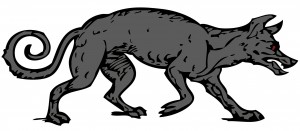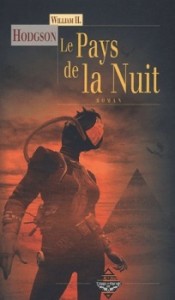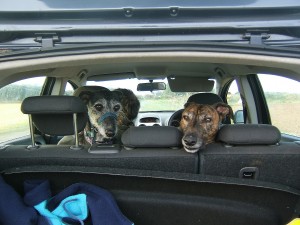Q. What’s huge and black with eyes like burning coals, its slavering jaws opening wide to engulf its victims? A. I don’t know, but there’s one right behind you… argghhhh! Creepy autumn is on its way, so it’s time to introduce some of the Other Dogs. These are the ones you’d never let play ‘bitey face’, the spectral hounds of the North.
Yorkshire has a solid history of terrifying, dog-like creatures roaming its moors and alleys, and not all of them are politicians. The best known of our monstrous brood is perhaps the barghest. If it’s new to you, the barghest is a huge intelligent dog, dark and somewhat wolf-like in appearance, with piercing eyes and a penchant for haunting lonely places. Yes, we were there long before Game of Thrones and its dire-wolves (although at least Sean Bean is a child of God’s Own Country). No-one knows exactly where the name comes from, because there are too many possible roots. Bier-geist, as in a spirit of the funeral bier, is one; burgh-ghost is another, as in a spirit which troubles a town. The name is particularly common in North Yorkshire – haunted Whitby is supposed to have a barghest – but for variants in other parts see later below.
 The barghest is associated with death in one form or another. It may come when a death is due, or when a death has occurred, its slinking black body a warning to the living. It may be seen only by the doomed or sick person, or it may be spotted lying on the threshold of someone due to expire. Its presence is often heralded by the clanking of unseen chains. Occasionally the barghest makes its own arrangements for death by hunting down appropriate targets and consuming them. Lonely travellers are a popular choice, and to be fair to the barghest, this does avoid hanging around waiting for someone to get the sniffles.
The barghest is associated with death in one form or another. It may come when a death is due, or when a death has occurred, its slinking black body a warning to the living. It may be seen only by the doomed or sick person, or it may be spotted lying on the threshold of someone due to expire. Its presence is often heralded by the clanking of unseen chains. Occasionally the barghest makes its own arrangements for death by hunting down appropriate targets and consuming them. Lonely travellers are a popular choice, and to be fair to the barghest, this does avoid hanging around waiting for someone to get the sniffles.
Some suggest that the dog in folklore is associated with scavenging, and with digging up bones from graveyards, hence the morbid links with the barghest. There is in fact one particularly relevant counterpart to Yorkshire’s barghest in Normandy and the Channel Islands, the rongeur d’os (gnawer of bones), a large phantom dog of death which again rattles its chain in the night.
(Our own gaunt black hound, Chilli, appears spookily out of nowhere, but that tends to be when walkies are due, or when we’ve settled down comfortably and really need a terrifying creature shoving her elbows into our faces to round off the evening.)
One of the most famous barghests is that which haunts Trollers Gill, a moody limestone gorge in the Yorkshire Dales, closely followed by the one which creeps into the snickelways of the city of York and takes down unwary folk. Presumably the latter one lives on a diet of squishy tourists and crunchy cameras. Having tramped Trollers Gill and York many times, I’m afraid (or relieved) to say that I’ve never encountered a barghest in either locale. Trollers Gill early in the morning, or at dusk, is certainly atmospheric enough to host a barghest or two.
 Trollers Gill, rather wetter than usual
Trollers Gill, rather wetter than usual
The barghest has its literary fans – it crops up in, amongst others, Robin Jarvis (The Whitby Witches), Roald Dahl (The Witches) and Neil Gaiman’s short story Black Dog apparently (but I haven’t read the last one, so I can’t be more precise).
Legends of black dogs and spectral hounds abound up here. Another name, or variant, is the pad-foot, seen in the West Riding around Leeds, Bradford and other modest settlements. The pad-foot can be heard behind you, pad pad pad, sometimes followed by a clank of chains and then the sight of a large baleful dog. Better not to turn round, they say, but to leg it home. The pad-foot is alternatively known as the gytrash or guytrash (not to be confused with guy-trash, the general rubbish left behind by passing men). The gytrash also crops up in literature – it’s mentioned in Charlotte Bronte’s Jane Eyre, one of my favourite books from school for some reason. Must have been the gothicky bits, moody Rochester and the mad-woman in the attic.
“I remembered certain of Bessie’s tales, wherein figured a North-of-England spirit called a ‘Gytrash,’ which, in the form of horse, mule, or large dog, haunted solitary ways, and sometimes came upon belated travelers, as this horse was now coming upon me.
“It was very near, but not yet in sight; when, in addition to the tramp, tramp, I heard a rush under the hedge, and close down by the hazel stems glided a great dog, whose black and white colour made him a distinct object against the trees.”
Rather disappointingly, this apparition turned out to be nothing more than Mr. Rochester’s dog.
I use the word ‘dog’ to describe these creatures, but as in Bronte, many of the stories suggest that the barghest, pad-foot or gytrash can take other shapes at will. It can appear as a dark shaggy bear, or a horse-like thing with the same burning eyes, and even as a headless human in some tales. Where the red eyes go in that case is open to conjecture.
We also have the legend of the gabble-ratchets, otherwise known as Gabriel Hounds, in Yorkshire. These are usually heard rather than seen, a howling that passes above and around you. Some connect them to the North European Wild Hunt, others to the concept of Gabriel, the angel who acts as the Messenger of God. The message sent by the gabble-ratchets is not usually a positive one, as again it’s a portent of imminent death. The alternative is that the sound of these terrible beasts is actually that of migrating geese, but that sounds much less likely than an archangels’ attendant pack of hounds riding the storm, doesn’t it?
If you like odd connections, as I do, then you might want to know that the 1972 Genesis album Foxtrot has a long, bizarre track called Supper’s Ready, which includes a section entitled thus: Apocalypse in 9/8 (Co-Starring the Delicious Talents of Gabble Ratchet). Peter ‘Non-Archangel’ Gabriel’s work, of course…
And yes, related legends do exist in other counties of England, but I’m prejudiced and this is my blog, so I don’t want any grumpy Lancastrians writing in and complaining. As a barghest would say, after you’ve eaten a few white roses, you just can’t go back.
So, we return to semi-reality. There’ll be one more general post here before the October horror-fest, so do call in during the month of mellow fruitfulness, even if it’s only to count how many bizarre punctuation mistakes I make and to complain about the lack of lurcher-related stuff for a while.
Dear Sir. I must protest in the strongest manner about a so-called ‘blog’ on ‘literature, lurchers and life’ which interrupts my canine fun to publish four weeks of arrant nonsense about horror and life after death.
Yrs, Major Cornelius Hetherington Smythe (deceased).
Goodnight, and don’t let the barghest bite.




